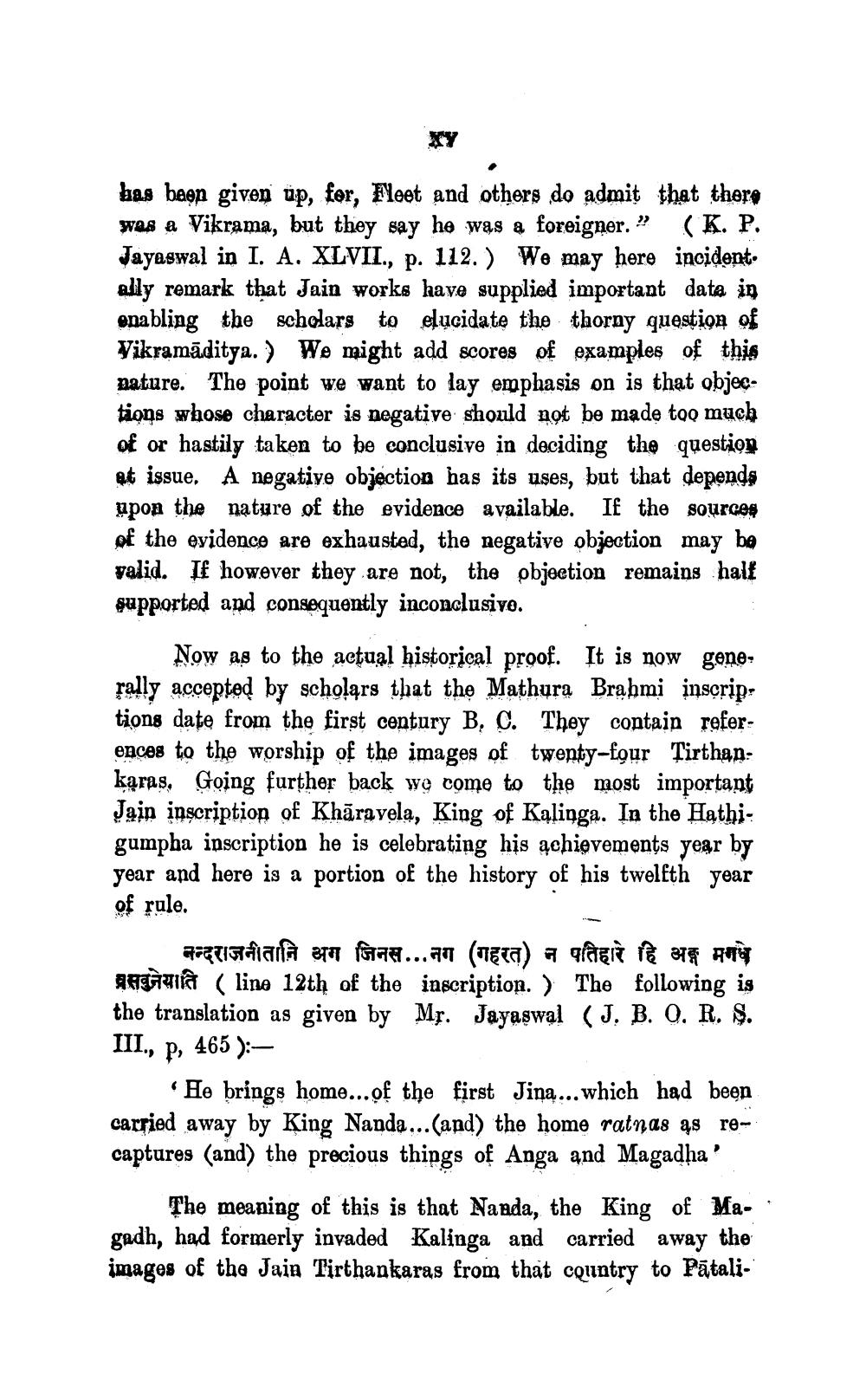________________
kas baon given öp, for, Heet and others do admit that there was a Vikrama, but they say he was a foreigner. " (K. P. Jayaswal in I. A. XLVII., p. 112.) We may here incident. ally remark that Jain works have supplied important data in enabling the scholars to elucidate the thorny question of Vikramāditya.) We might add scores of examples of this nature. The point we want to lay emphasis on is that objec. tions whose character is negative should not be made too much of or hastily taken to be conclusive in deciding the question at issue. A negative objection has its uses, but that depends upon the nature of the evidence available. If the sources of the evidence are exhausted, the negative objection may be valid. Ik however they are not, the objection remains half supported and consequently inconclusivo.
Now as to the actual historical proof. It is now gene: rally accepted by scholars that the Mathura Brahmi inscrip. tions date from the first century B, C. They contain references to the worship of the images of twenty-four Tirthankaras, Going further back we come to the most important Jain inscription of Khāravela, King of Kalinga. In the Hathigumpha inscription he is celebrating his achievements year by year and here is a portion of the history of his twelfth year of rule.
नन्दराजनीतानि अग जिनस...नग (गहरत) न पतिहारे हि अङ्ग मगधे anda ( line 12th of the inscription.) The following is the translation as given by Mr. Jayaswal (J. B. O. R. S. III., P, 465 ):
He brings home...of the first Jina... which had been carried away by King Nanda ... (and) the home ratnas as recaptures (and) the precious things of Anga and Magadha'
The meaning of this is that Nanda, the King of Magadh, had formerly invaded Kalinga and carried away the images of the Jain Tirthankaras from that country to Pātali




